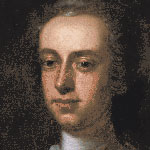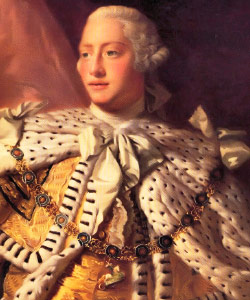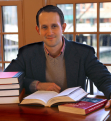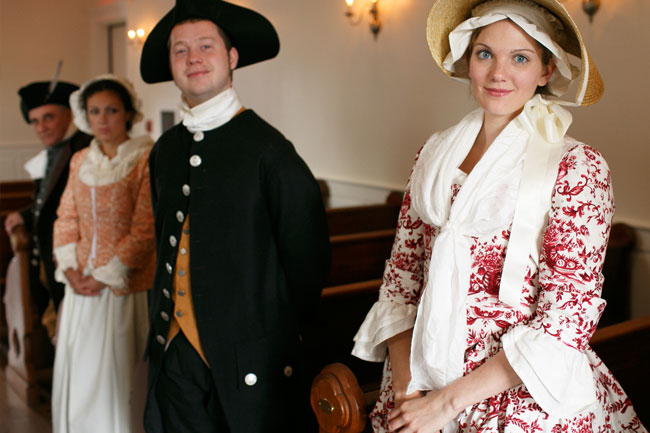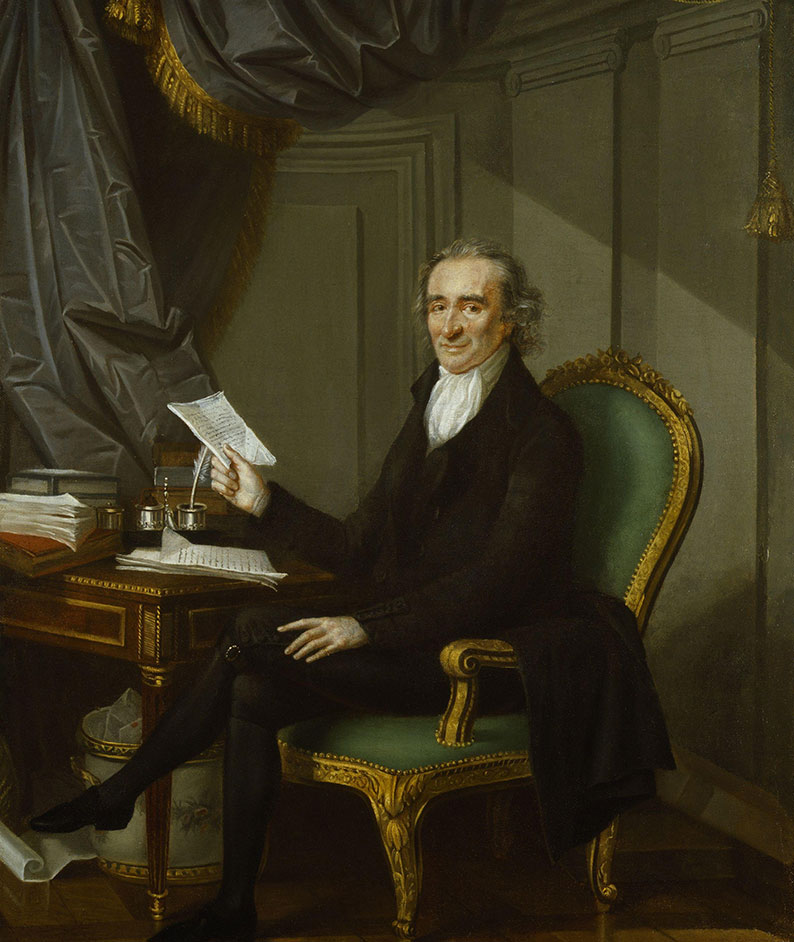In May of 1765, the news of the impending Stamp Act reached Boston. Starting November 1, 1765, all printed documents would be required by law to carry a stamp. Over the course of the summer of 1765, colonists grew increasingly agitated with the idea of the Stamp Act. On August 14, tensions finally reached a boiling point. Thousands of angry colonists gathered beneath Boston’s Liberty Tree where they proceeded to march down to Andrew Oliver’s wharf. Oliver was the appointed Stamp Master, and it was believed he had the stamps in storage at his warehouse. Colonists completely looted the warehouse turning up nothing. Unsatisfied, they next ransacked his home by casting paving stones through the windows, destroying his furniture, and finally raiding his liquor cellar. Less than two weeks later, the brother-in-law of Oliver, Lieutenant Governor and Chief Justice Thomas Hutchinson lost his house to the Boston mob in similar fashion.
John Adams & The Stamp Act
Adams Publishes “The True Sentiments of America”
John Adams was appalled by the senseless violence and atrocities committed by the mob. By virtue of his studies, Adams strongly disliked extralegal means of protest. The law must always be abided by, for the law was the best means by which to redress grievances, according to Adams. But John still opposed the Stamp Act, for it was a measure taken by Parliament which would tax the American colonists without their consent. Later that year, Adams published “The True Sentiments of America,” which discredited the rioters. But at the same time, he expounded on the idea that American rights were not “ideals still to be obtained” in the words of David McCullough, but rather “rights long and firmly established by British law and by the courage and sacrifices of generations of Americans.”
Stamp Act Resistance Begins to Ignite a Revolution
The passage of the Stamp Act, and its disputed legality created an atmosphere conducive to debate in colonial America. The origins of rights, both natural and unique to Englishmen, were discussed by scholars and ordinary subjects alike. Popular leaders, such as John’ second cousin Samuel Adams, stoked the flames of discontent. Colonists started to conceptualize that the individual was entitled to certain liberties. If laws passed by any legislative body violated these entrenched rights, the law would not be valid, and would therefore not be followed. In this way, the enactment of the Stamp Act, and the resistance to the tax by American colonists laid the bedrock for the revolution to come.
James Otis Jr. Faces Decline
The troubles created by the Stamp Act brought Boston’s most influential people together. Adams began meeting with his second cousin Samuel Adams along with his mentor, James Otis Jr. John discovered the Samuel Adams was born to lead, and had a thorough understanding of rights and liberties. James Otis Jr. on the other hand was facing decline. According to John Adams, Otis was “liable to great inequities of temper, sometimes in despondency, sometimes in rage.” Possibly suffering from depression, Otis was slowly slipping into insanity. Adams noted in his diary that Otis “rambles and wanders like a ship without a helm.
Passage of the Declaratory Act
Suddenly, in 1766, the Stamp Act was repealed by Parliament. The colonists were elated with the news, but were less than thrilled with the passage of the Declaratory Act that same year. Although Parliament repealed the Stamp Act, the Declaratory Act proclaimed that Parliament would forever hold the right to tax their subjects with, or without their consent. But with the repeal of the taxes, tensions between the American colonists and Parliament seemed to relax. For this reason, Adams removed himself from politics and instead refocused on his career.
Adams Becomes Boston’s Most Successful Attorney
He took several cases in the following year ranging from tarring and feathering, to land transfers. It was at this point his career took off thanks in part to the recent death of Jeremiah Gridley, and the mental collapse of James Otis that had by now become public knowledge. But regardless of favorable circumstances, John Adams had become Boston’s most successful attorney. In addition, in 1766 he was elected selectman to the town of Braintree. By 1768, his practice had become so busy, that he opened a law office in Boston, and took on two clerks to serve as assistants in Jonathan Austin and William Tudor.
The Liberty Affair
Then in 1768, an incident aboard one of John Hancock’s ship, the Liberty convinced Parliament of the need for quartering troops in Boston to keep peace. Since Thomas Kirk, a customs agent, had been locked in the Captain’s cabin of John Hancock’s ship while his crew smuggled taxable goods into Boston, the American Board of Customs ruled that the Liberty should be seized as punishment for this illegal activity. When Richard Harrison went down to Hancock’s Wharf and ordered marines from the British warship the Romney to tie lines to the Liberty so that it may be hauled away, thousands of spectators started to brawl with the sailors. In the riot that ensued, Harrison and his son were attacked. By the end of the day, the Boston mob had dragged Harrison’s pleasure boat out of the water and overland to Boston Common, where they lit it on fire.
The Protest Movement Gains New Life
The Liberty Affair convinced Parliament that British regulars needed to be sent to Boston to quell the disturbance. On October 1, 1768, two thousand regulars landed at Long Wharf, marched through the town in grand ceremony, and camped out on Boston Common for the James Otis Jr., a prominent Boston attorney, provided inspiration to Adams and his legal career night. The people of Boston were outraged at the presence of British troops in a time of peace, and the protest movement gained new life.
